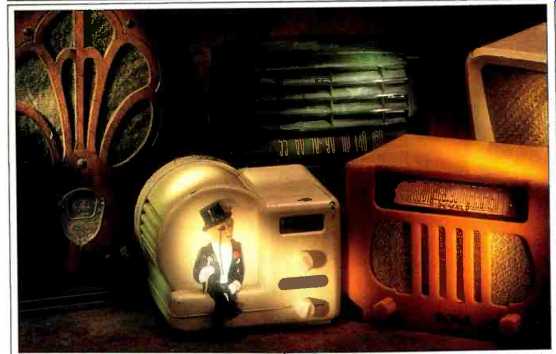
AIM HIGH ON AM
I have been enjoying Audio for many years, and for the first time, I feel compelled to write. In the July issue, Leonard Feldman reviewed the Technics SA-GX910 NV receiver and made a comment on the poor performance of the AM section of the tuner. He went on to comment on how all manufacturers, except for one or two, pay no serious attention to AM performance. I say, finally I see something in print that strikes at the heart of the problems of AM radio.
As all of you who can remember when AM receivers were somewhat more wide-banded know, AM is capable of exactly the same frequency response and distortion characteristics that FM is. As chief engineer of several radio stations over the past 25 years, including some of the huge 50,000 watt clear-channel powerhouses, I maintained these stations at specifications that included frequency response from 25 to 15,000 Hz, ± 0.5 dB! Distortion figures were always below 1.2%. One of those old 50-kW transmitters really "groaned" during some musical passages, but these stations sounded exactly like FM on a low-distortion, wide-band monitor.
Several years ago, when broadcasters were being alarmed everyday whenever new radios were introduced, especially car radios, AM stations began to sound so bad that on some car radios even talk stations were hard to understand! Receiver manufacturers put narrow-band filters in the i.f. that restricted high frequencies to 2,800 Hz or less. Phase response and "ringing" of those cheap narrow filters further eroded received AM quality. Broadcasters and manufacturers agreed on the NRSC pre-emphasis and 10,000 Hz bandwidth limits in hopes of manufacturers "opening up" the i.f. bandwidth.

At this time most major AM stations and many smaller AMs are transmitting very high-quality, NRSC-compliant signals. Before the agreement, AM stations could transmit the full 15,000-Hz audio bandwidth. We gave up the top half-octave to persuade receiver manufacturers to design and market wider bandwidth radios. The biggest limiting factor was AM's higher susceptibility to noise. We hear the roll-off above 10 kHz, but casual listeners pay little attention to that if the signal is noise-free.
Now, new rules soon to be adopted seem to be "sticking it" to AM again.
Whenever AM broadcasters seek to upgrade the signal, they must reduce signal strengths toward their "neighbor" stations on or near their spot on the dial by 10% (a 20% power reduction) by either reducing transmitter power or tightening up a directional antenna system. Just what AMs don't need is a reduction in signal level, right when they need all the signal they can get to overcome man-made electrical interference.
I wonder how many readers know just what awful stuff is done to audio these days before it's applied to a transmitter for broadcast. For all but the few FMs who broadcast primarily Fine Arts programming, any resemblance a received audio signal bears to the original is coincidence. Dynamic range, even on the "softer" stations, is usually less than 6 dB. Limiting high frequencies dynamically to fit inside the pre-emphasized modulation limits often means the highs are attenuated nearly 18 dB! Then clipping is applied.
Dividing the signal up into some three to seven frequency bands and processing them separately, then recombining them and processing them some more, is what almost every FM station is doing these days. Most AM stations now process their audio somewhat less than FM stations do.
Those listeners fortunate enough to possess a true wide-band AM receiver-the (now discontinued) Sony SRFA100 and SRF-A1, the Carver TX-11b, and only one or two other models-are the only people who can truly hear great sound via AM. (Unless they listen to a station's monitor or have an old wide-band tuner or radio.) The new stuff is "junk" on AM. Most people think that since FM sounds okay and AM sounds bad, then it's the station and/or the medium that falls short. How can we expect them to think differently? What AM needs the most is the ability to transmit a strong enough signal to overcome man-made interference, the ability to transmit wide-band audio back out to 15,000 Hz, and most of all, for receiver manufacturers to include (at the least) NRSC wide-band, low distortion, AM tuner sections. Noise and interference-cancelling circuitry is highly developed and should be implemented in all future receivers. And the public should be educated that AM sounds bad mostly because of the inferior receivers they must listen to.
If there is any way Audio can help encourage the receiver manufacturing industry to include higher quality AM sections, all AM broadcasters, and eventually the public to which they broadcast, will benefit.
--Ted Alexander is chief engineer of WDOK-FM and WRMR-AM in Cleveland, Ohio, and he hosts a midday on-air program. He has been a broadcast veteran "from both sides of the mike" for 28 years.
(adapted from Audio magazine, Nov. 1992)
Also see: Forum by Tom Jung (Feb. 1992)
= = = =